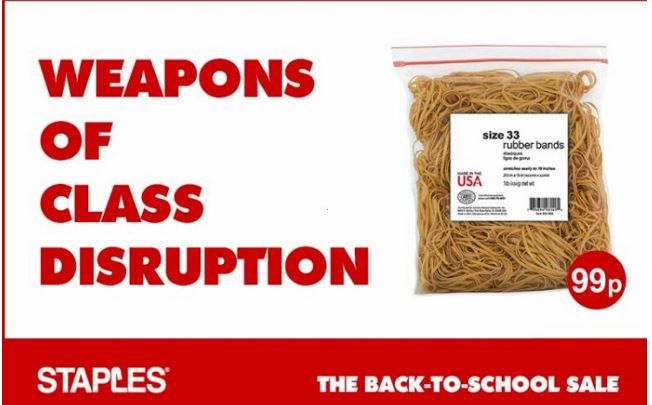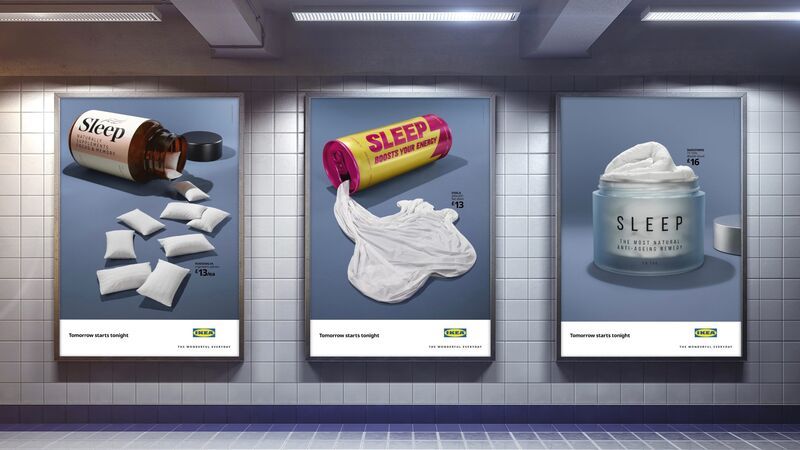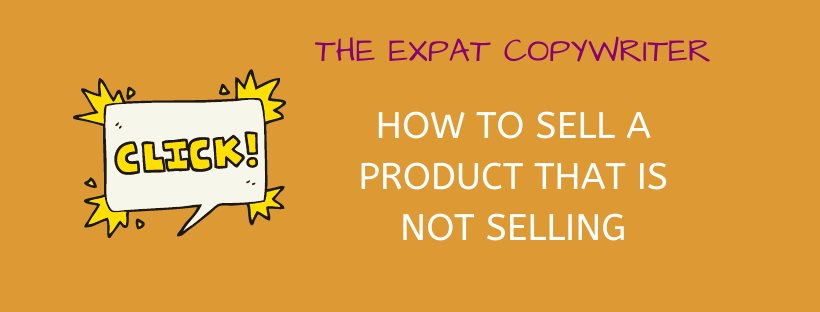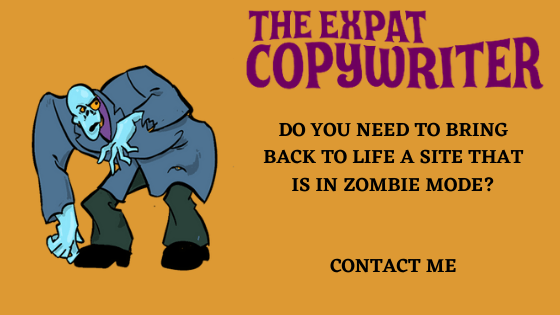You might feel a bit desperate because your product is not selling as well as you predicted.
You’ve invested some cash in social media ads and AdWords but people don’t click on them, and, therefore, don’t buy.
And you ask yourself,
why? What am I doing wrong? My product is great but I can’t stand out from the rest.
Before giving up, stay and read this post.
It may help you find the best way to sell your product on the Internet.
There are several reasons why a product doesn’t sell enough.
But if you think your product is really good and there’s room for it on the market, you should ask yourself the following question:
Am I really transferring my enthusiasm to the audience?
Let me explain.
What’s in reality the act of selling?
Selling is a transfer of enthusiasm. It’s getting people to see your product or service with the same enthusiasm as you do.
How to sell a product that is not selling. #copywriting #Marketing #Ads #SmallBiz Share on XIsn’t that the base of every sale?
Unbridled enthusiasm is when we buy something online and we hear the doorbell some days later, and we sense it’s the delivery man, so we run like crazy to open the door.
Because we can’t wait to get our hands on that product.
But how do we transfer that enthusiasm to prospects in the first place so they click the buy button?
This is what we’re going to see in this post.
Are you staying?
Then, let’s go!
Sell a concept rather than just a product or service
If you limit yourself to just selling a product or service itself, it’ll be much more difficult to get people excited.
The only exception to this rule is when the product is so new and unique that the product itself becomes the concept.
Like the first iPhone.
The copywriters who wrote the copy for the first iPhone only had to highlight its features for everyone wanting one.
But if your product or service isn’t unique and revolutionary you will need to create enthusiasm with more resources than just listing features.
You’ll have to put all your sharpness on the table in order to differentiate it from the competition and transform it into a desirable concept.
People don’t buy products or services, they buy the promise of how that product or service will make them feel.
You need to keep this in mind when advertising your product.
How to transform your product into a desirable concept
Sometimes the concept will be intrinsically associated with the product (the first iPhone), and other times we’ll have to create the concept from scratch.
Even for boring products, you can come up with a concept that stands out from the rest.
Like this ad.

What could be more boring than simple rubber bands?
Still, the copywriter has found a concept to make them more attractive.
They are no mere bands, they are weapons of class disruption!
Finding the concept that will differentiate your product isn’t a piece of cake.
You’ll have to study it from all angles, talk to prospects, spy on your competition, etc.
All the information you can gather is more than welcome.
And with that information, you’ll have to think long and hard to create a winning concept.
How to sell a product that is not selling. #copywriting #Marketing #Ads #SmallBiz Share on XOften, telling a story about your product helps to sell the concept more than the product.
Like in the next example:
This is a great story told by Joe Sugarman – one of the best direct response copywriters in history – which I read in his book Copywriting Handbook.
Back in the 80s, in the middle of the Cold War, Sugarman wanted to sell a small chess computer.
It was a good product but it didn’t sell well since there was a lot of competition.
Sugarman decided then to make use of the current affairs to create an ad with a hook. An ad that told a story and didn’t just list the computer’s features.
He asked Anatoli Karpov, the Soviet chess champion, for permission to use his name in order to endorse the product.
The ad reads as follows:
Headline: “Soviet Challenge”
Subheadline: “Can an American chess computer beat the Soviet chess champion? A confrontation between American space-age technology and a Soviet psychological weapon”
Copy: The Soviet Union regards chess as a psychological weapon, not just a game. It’s a symbol of Communism’s culture struggle with the West.
So when the Russian Anatoli Karpov competed against the Russian defector Victor Kornochi, he had the entire Soviet Union’s resources at his disposal, including a hypnotist and neuropsychologist.
Karpov won. And with it the world’s undisputed chess championship. Karpov, however, has never confronted American space-age technology and in particular JS&A’s new chess computer.”
The ad didn’t end there but went on about this great challenge adding drama to it.
Isn’t it wonderful?
Try to get into the average American’s mindset back then.
The Cold War was making all the headlines.
The Americans were obsessed with the topic and there was nothing they wanted more than to show their superiority over the Russians.
Sugarman wasn’t selling the computer itself, but the concept of the confrontation between the Soviet Union and the U.S., and as a result, he sold more than 20,000 computers while his competitors were scratching their heads.
This example helps us to realise how important it is to be aware of what’s going on around us and to use current affairs to create enthusiasm.
Like this clinic has done. Brilliant use of the current state of things.

Catchy slogans and headlines
Smart slogans and headlines can also help to sell a product better.
Because they make them stand out and get stuck in our minds.
Have you ever wondered what makes a slogan catchy?
Redbull gives you wings
Because you’re worth it
Every little helps
A slogan exists to express that promise contained in the Big Idea.
The Big Idea is the concept on which we’ve based our marketing strategy.
Recommended reading: The secret to selling more: The Big Idea
You don’t have to rack your brains to get your slogan to rhyme (although if it rhymes it’s more likely to be catchy) but it does have to be written in simple language.
Using humour also works, although you need to be careful since, lately, it’s difficult to make jokes without offending some group or another.
The most important thing is to know your audience really well so you can connect emotionally with them.
See, for instance, the excellent campaign from Ikea with the catchphrase Tomorrow starts tonight.

IKEA highlights the benefits of good sleep by comparing it to “miracle” products that promise the same result but seldom deliver, featuring vitamin supplements, energy drinks and anti-ageing creams.
So they make a case for the power of having the right bedtime accessories.
This is another brilliant example of how to sell the concept rather than the product itself.
How to sell a product that is not selling. #copywriting #Marketing #Ads #SmallBiz Share on XThe truth is that no one has time.
We are in a constant hurry, we’ve got children to pick up from school, work to finish, dinners to prepare, Instagram stories to watch… In short, life keeps us all very busy.
So your ad or organic post isn’t going to get people’s attention unless it does one of these things:
- Awakes our curiosity
- Amuses us
- Promises to improve our lives in a way we consider important
- Solves a problem we are suffering from
- Protects us from danger
Depending on the nature of your product or service you should appeal to one or more of these attention triggers.
Today, more than ever, attracting people’s attention is a real challenge.
It’s already difficult enough to get your partner’s or children’s attention!
So imagine getting the attention of someone who doesn’t know your brand and has thousands of distractions at her fingertips.
That’s why connecting emotionally with your audience is so important and above all, expressing perfectly how your prospect is going to benefit from what you’re offering.
Tell them something they don’t know and it’s interesting for them, use a story that moves them, explain clearly how their lives will improve, show the before and after…
How to sell a product that is not selling. #copywriting #Marketing #Ads #SmallBiz Share on X




0 Comments